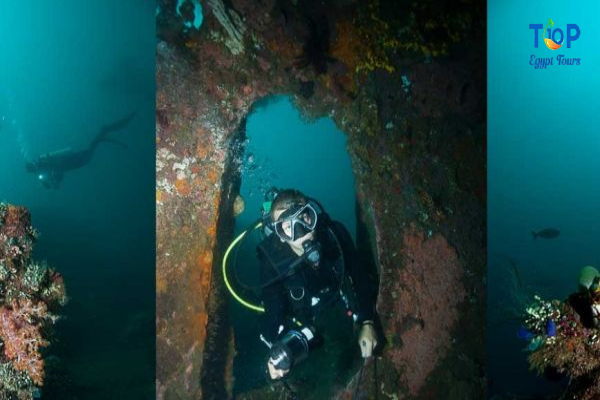Experimenting with Diving Photography Welcome to the mesmerizing world beneath the surface of Egypt’s crystal-clear waters! As part of our ongoing exploration of the diverse and enchanting experiences Egypt has to offer, we dive deep into the realm of underwater photography. From the vibrant coral reefs of the Red Sea to the mysterious depths of ancient submerged cities, Top Ten Egypt Tours invites you to embark on a visual journey through the lens of diving photography.
Egypt, with its vast Red Sea coastline and crystal-clear waters, is a paradise for divers and underwater photographers alike. From vibrant coral reefs teeming with marine life to ancient shipwrecks lost in time, the Red Sea offers an abundance of photographic subjects. But capturing the beauty and wonder of the underwater world requires more than just pointing a camera and shooting.
1. Experiment with Different Perspectives
Don’t just stick to shooting from eye level. Get down low to capture the intricate details of the coral reef or swim up close to get a macro shot of a fish’s eye. You can also use a wide-angle lens to capture the vastness of the underwater world or try shooting through a porthole or a school of fish to create interesting effects.
2. Use Lighting to Your Advantage
Natural light is essential for underwater photography, but it can be challenging to work with. The deeper you go, the less light there is, and the blue color of the water can make everything look washed out. To compensate, you can use a strobe or video light to add artificial light. Be careful not to overdo it, though, as too much light can create unnatural reflections and backscatter.
3. Capture Movement and Behavior
Don’t just take static shots. Try to capture the movement of marine life, whether it’s a school of fish swimming in formation or a shark darting past. You can also use slow shutter speeds to create a sense of movement or use a burst mode to capture a series of images that show the progression of an action.
4. Get Creative with Composition
Pay attention to the composition of your shots. Use leading lines to guide the viewer’s eye into the frame, and look for interesting shapes and patterns. You can also use foreground elements to frame your subject or create a sense of depth.
5. Edit Your Photos
Once you’re back on land, don’t forget to edit your photos. This can help to bring out the colors and details that you captured underwater. You can also use editing software to remove backscatter, adjust exposure, and crop your photos to perfection.
6. Use the Right Equipment
While you can take some great underwater photos with just a point-and-shoot camera, you’ll get better results with a dedicated underwater camera housing. This will protect your camera from the water and allow you to use interchangeable lenses. You’ll also need a strobe or video light, as well as diffusers and filters to help you control the light.
7. Take a Diving Photography Course
If you’re serious about underwater photography, consider taking a diving photography course. This will teach you the basics of underwater camera settings, lighting, and composition, as well as how to safely dive while taking photos.
8. Practice, Practice, Practice
The best way to improve your underwater photography skills is to practice as much as possible. Get out there and dive as often as you can, and don’t be afraid to experiment. The more you shoot, the better you’ll become at capturing the beauty of the underwater world.
In conclusion, diving photography is a fascinating and rewarding pursuit that allows us to capture the beauty and mystery of the underwater world in all its glory. By experimenting with different perspectives and techniques like macro photography, blackwater diving, wide-angle photography, silhouette photography, long exposure photography, and lighting techniques, we can create truly stunning and memorable images that will transport viewers to another world altogether! So grab your camera gear and dive into this exciting world of underwater photography!



Comment (0)